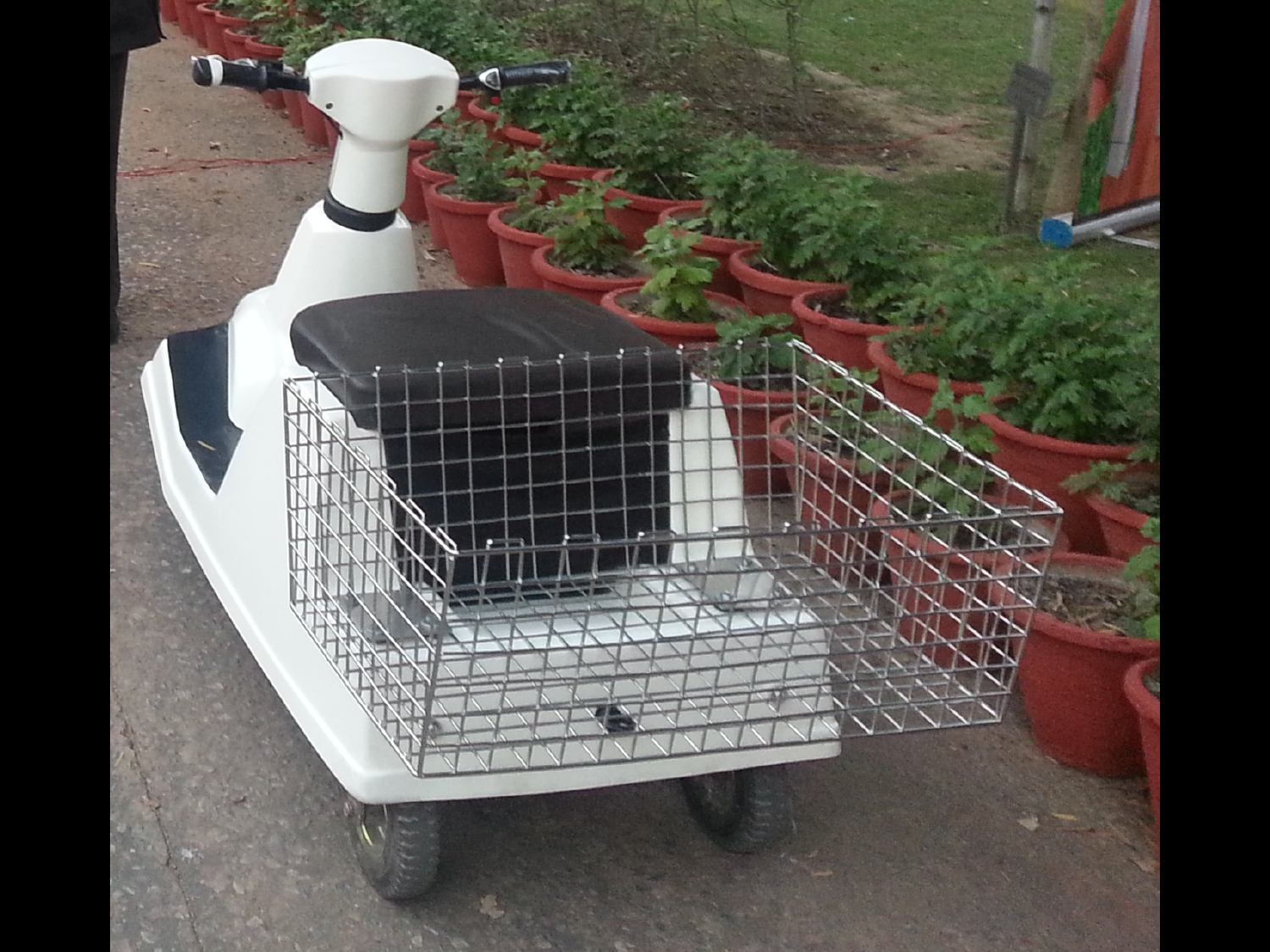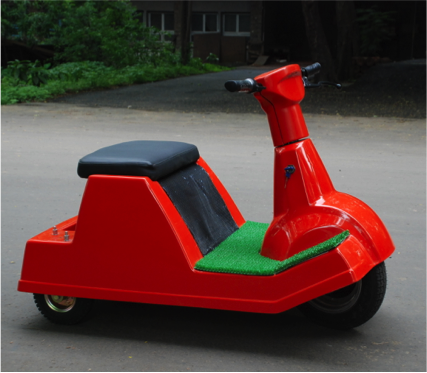Unibody electric 3 wheeler vehicle
This invention presents a chassis-free unibody electric three-wheeler vehicle constructed entirely from fiber-reinforced plastic (FRP) using one-shot molding. The vehicle eliminates the need for a separate metal frame by directly mounting all components—front steering fork assembly with hub motor, rear wheel assemblies, and seat assembly—onto the molded FRP body. The design results in a lighter, stronger vehicle with reduced manufacturing time and costs while maintaining comparable power and load-carrying capacity.
Existing electric vehicles rely on heavy metal chassis or frames that increase manufacturing complexity, weight, and costs. The traditional approach requires multiple assembly steps, welding/joining processes, and higher inventory costs. There's a market need for stronger, lighter, and more economical electric vehicles that are simpler to manufacture while maintaining structural integrity and performance.
- Chassis-free unibody construction using fiber-reinforced plastic
- Electric hub motor integrated into front steering wheel
- One-shot molding manufacturing process
- Direct mounting of all assemblies onto the FRP body
- Compartmentalized battery storage below seat assembly
- C-shaped rear fork design with pivoted wheels
Integrated dashboard with LED display and controls
Novelties/Advantages:
- 2-3 times faster manufacturing compared to chassis-based vehicles
- Significant weight reduction without compromising strength
- Reduced material content and inventory costs
- Elimination of welding/joining processes
- Higher strength-to-weight ratio due to unibody design
- Adaptable to various production scales (small to large quantities)
- Lower power motor requirements due to reduced vehicle weight
Body Structure:
- Single-piece FRP construction eliminating traditional chassis
- Integrated compartments for battery storage and component housing
Reinforced mounting points for direct assembly attachment
Front Assembly:
- Hub motor (250W-1000W) integrated into front wheel
- Steering fork connecting wheel-motor unit to handlebars
Pivoted steering rod mechanism for directional control
Control Systems:
- Handlebar with integrated grip, brake lever, and cable system
- Dashboard featuring LED display, horn, switches, and accelerator
Controller unit managing motor, battery, and electrical systems
Rear Assembly:
- Two C-shaped forks with wheels pivoted between arms
- Independent rear wheel suspension system
Direct mounting to reinforced body sections
Power System:
- Battery pack housed in compartment below seat
- Integrated charger system for convenient recharging
Wiring harness connecting all electrical components
Seating:
- Modular seat assembly with base and cushion
- Secure mounting via dedicated bolts to body structure
Configurable for single or multiple passenger arrangements
Future editions will include trailers, carts or other farm accessories that can be added/mounted to the back of the vehicle.
This innovation promotes sustainable transportation by creating eco-friendly electric vehicles aligned with green initiatives. The simplified manufacturing process makes electric vehicles more accessible and affordable, potentially accelerating adoption in developing markets. The lightweight design improves energy efficiency, extending battery life and reducing environmental impact while providing cost-effective personal mobility solutions.
Primary applications include personal transportation, last-mile delivery services, urban commuting, and rural mobility solutions. The design can be adapted for single or multiple seaters, making it suitable for individual users, small businesses, and commercial applications. The scalable manufacturing process makes it viable for both small-scale local production and large-scale industrial manufacturing across various geographic markets.


